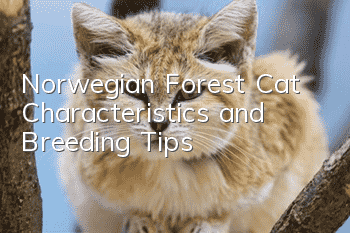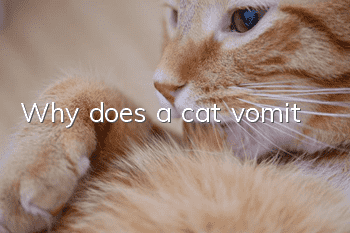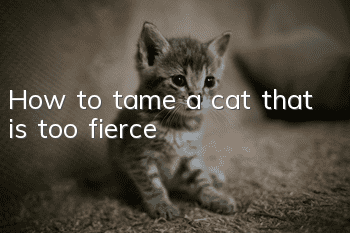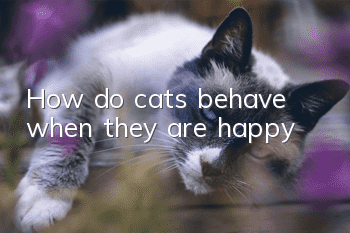Norwegian Forest Cat Characteristics and Breeding Tips

Around us, many friends choose to keep pet cats, and Norwegian forest cats tend to be lively and active, with high sensitivity, and are one of the more popular pet cats. So, what are the general characteristics of Norwegian Forest Cats? What do we need to pay special attention to when raising Norwegian Forest Cats?
1. History and personality of Norwegian cats
1. From the Norwegian Forest
This cat's ancestors inhabited the forests of Norway and is a unique cat species in Scandinavia. Its origins can be traced back to ancient times. They often appear in Nordic mythology as goblin-like cats.
2. Once on the verge of extinction
The number of Norwegian forest cats has been decreasing year by year and is in danger of extinction. Therefore, in the early 1970s, efforts to preserve and reproduce became particularly important. It was not recognized as an independent breed until 1930.
3. Norwegian cat personality
Lively and brave, it is almost the only cat that can swoop down to the ground from a high place without fear. He likes children, has a docile personality, and can get along harmoniously with other family members, including cats and dogs.
4. Offspring have shorter hair
The long-haired cats that originally lived in the forest were mixed with ordinary short-haired domestic cats. Since the short-haired gene is dominant and the long-haired gene is recessive, most of the offspring will become short-haired.
2. Appearance characteristics of Norwegian cats
Norwegian cats are gentle and intelligent, and are very popular.
1. The face is triangular
The face is in the shape of an inverted equilateral triangle, with high cheekbones, a straight bridge of the nose, and a slightly tilted nose. The eyes are large, round, and almond-shaped, showing a full and energetic look.
2. Green eyes and wide ears
The eye color is green or golden. The ears are upright, with rounded ends. There is a tuft of long feathers inside the ears. The ears are wide at the base and located slightly lower than the head.
3. The body is muscular
All parts of the body are well muscled, the bones are thick, the neck is short and fluffy, and the neck is covered with fluffy hair like a scarf. The chest is broad, the chest muscles are developed, and the waist is thick, giving people the impression of strength. The tail with thick long hair is always raised high.
4. The limbs are strong and flexible
The limbs are stout, and the hind limbs are longer than the forelimbs. They are covered with thick body hair, making the hind limbs look like they are wearing bloomers. The legs and claws are strong and can jump up and down on rocks flexibly.
5. Unique double-layered coat
The undercoat is dense and covered by a long, smooth, waterproof coat. In winter, the dense undercoat is fully grown, so the winter coat is fuller than the summer coat.The quality and type of coat are most important, color and pattern are less important.
6. Various hair colors
The colors and patterns of coat are very diverse. There are 50 colors recognized by CFA, including black, white, blue, red, brown tabby, two-color, black smoke, silver tabby, etc.
7. Shape like a Coon cat
The Norwegian Forest Cat looks the same as the Maine Coon Cat. The main difference between the Norwegian Forest Cat and the Maine Coon Cat is that its hind legs are slightly longer than its front legs and its coat is double-layered. Weighing about 3 to 9 kilograms, female cats are smaller than male cats, with longer and stronger bodies.
3. Daily feeding of Norwegian cats
1. The food plate is fixed and used
Norwegian forest cats are very sensitive to changes in their food plates and sometimes refuse to eat because their food plates are changed. Keep food dishes clean. Newspapers can be placed under the food plate to facilitate cleaning, and leftover food should be thrown away or mixed with fresh food and cooked before feeding.
2. Feed at a fixed time and at a fixed point
Once the Norwegian Forest Cat's biological clock for eating is formed, it is relatively fixed and should not be changed at will. Norwegian Forest Cats do not like to eat in places with noisy noises and strong light. If guests come to visit, do not let the guests see the cat while the cat is eating.
3. Use claw hook to get food
If the Norwegian forest cat has the bad habit of taking food out of the food plate to eat. Once this phenomenon is discovered, it should be corrected immediately so that the owner can feed it in the future.
4. Give warm food
Cold food and cold food can easily cause digestive disorders. Under normal circumstances, the appropriate temperature of food is 30 to 40 degrees. Although Norwegian forest cats don’t drink much water, they must have enough clean drinking water, and the water must be clean water.
Regarding the characteristics of the Norwegian Forest Cat, the face is in the shape of an inverted equilateral triangle, the body muscles are relatively developed, the limbs are thick, and the hair is thicker. Therefore, when raising this cat, we must pay attention to learn more about the feeding techniques of this cat. You should pay attention to the grooming of the cat wholesale and pay attention to related cleaning work.
- What are the symptoms of cat constipation? And how to relieve it?
- What precautions should be taken when breeding Chinchilla?
- What causes scab-like lumps on cat's paws?
- What does it feel like when a cat’s amniotic water breaks?
- Why don’t cats like to be hugged?
- What are the consequences of water in a cat’s ears?
- How much water is enough for cats to drink every day if they eat dry food or canned food?
- What should I do if my cat has catitis? Treat it locally and all over the body.
- What are the dangers of keeping free-range cats outside?
- How to deal with a cat in heat



